Horizontal shortening
1. Introduction
With prolonged facial paralysis, the orbicularis oris muscle atrophies. This results in lower lip thinning and elongation.
Options for corrections include:
- Wedge resection of the lower lip
- Lower lip plication

2. Planning and surgical preparation
The amount of resection is determined by pinching the lower lip of the patient until the lip tubercle is centered at rest. Generally, this amounts to 10-20 mm of resection.
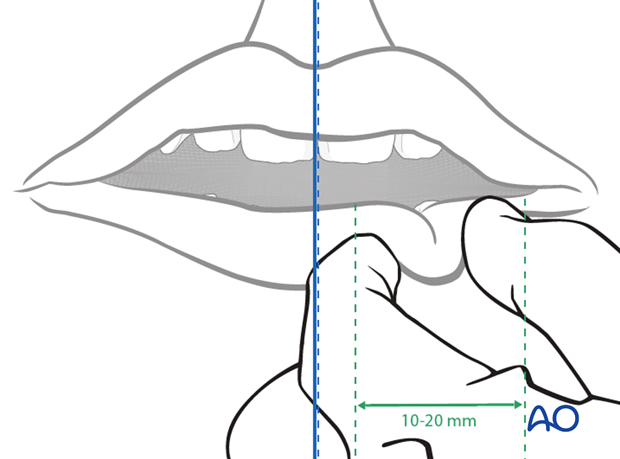
3. Technique
Wedge resection of the lower lip
This procedure allows full thickness removal of the paralyzed side of the lower lip, resulting in centralization of the lip tubercle and symmetry at rest.
It can be performed under local anesthesia.
A triangular wedge is drawn out in a vertical fashion starting 5 mm from the oral commissure.
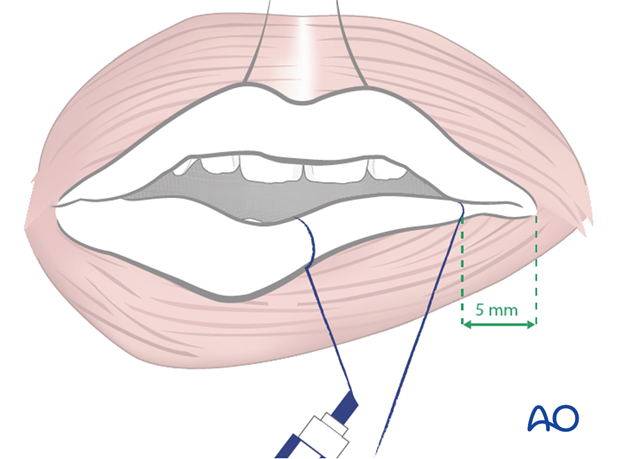
A full thickness incision is performed, and the defect is closed in 3 layers (mucosa, muscle, and skin).
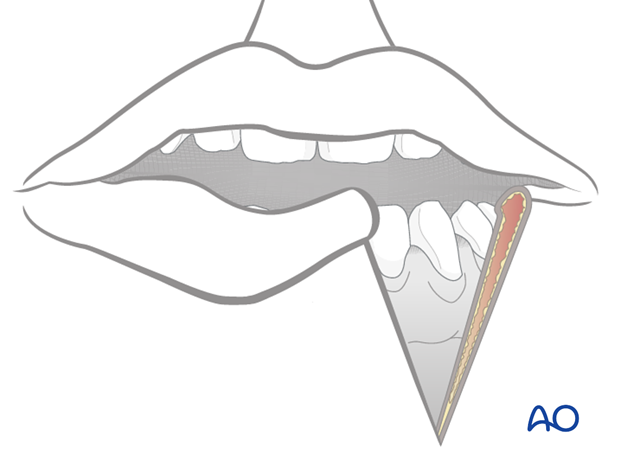
Alternative: lower lip plication
Alternatively, only the skin and red lip mucosa can be removed. The underlying orbicularis oris muscle is plicated enhancing the lip volume.
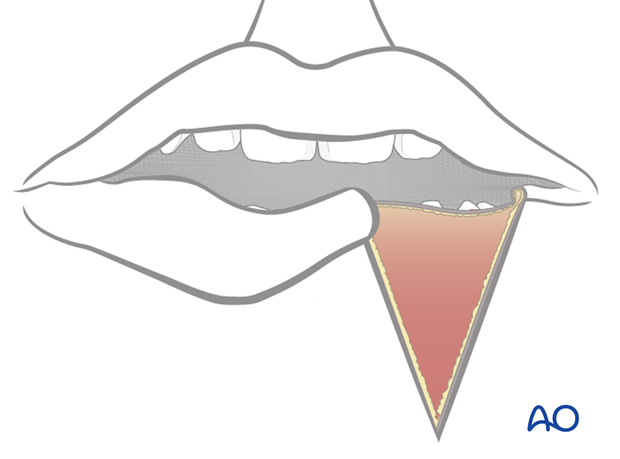
Closure
The skin and mucosa are closed as separate layers.
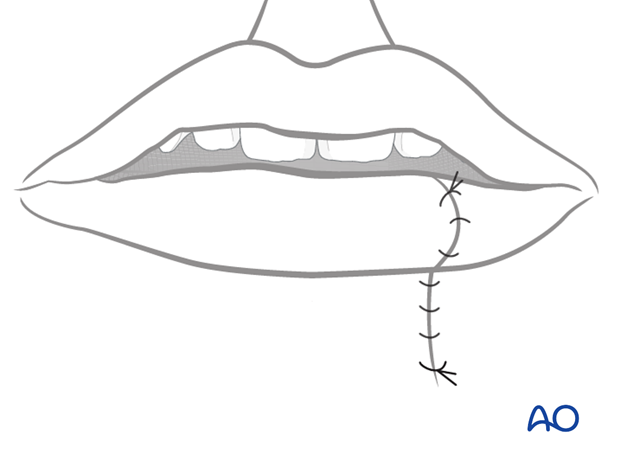
4. Case example: longstanding facial paralysis
a) Patient with longstanding facial paralysis causing elongation of the lower lip.
b) Postoperative wedge excision improves lower lip symmetry at rest and with smile.
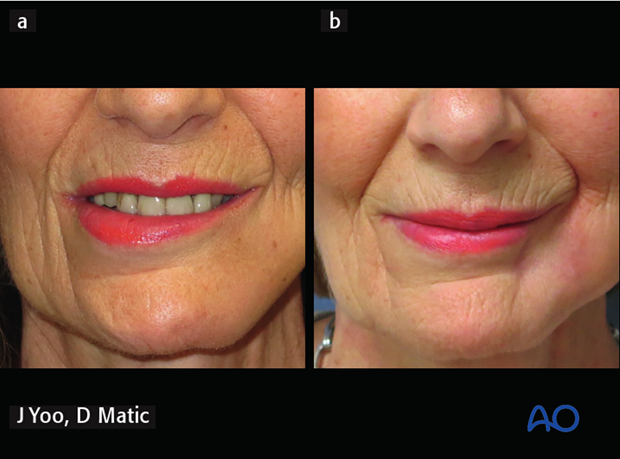
5. Aftercare
Routine wound care is all that is necessary for the majority of the procedures.













